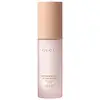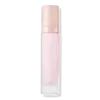What's inside
What's inside
 Key Ingredients
Key Ingredients

 Benefits
Benefits

 Concerns
Concerns

 Ingredients Side-by-side
Ingredients Side-by-side

Water
Skin ConditioningDimethicone
EmollientPolysilicone-11
Butylene Glycol
HumectantNylon-12
Silica
AbrasiveSqualane
EmollientIsononyl Isononanoate
EmollientPhenoxyethanol
PreservativeHydroxyethyl Acrylate/Sodium Acryloyldimethyl Taurate Copolymer
Emulsion StabilisingEthylhexylglycerin
Skin ConditioningAmmonium Polyacryloyldimethyl Taurate
Emulsion StabilisingIsohexadecane
EmollientPEG-10 Dimethicone
Skin ConditioningPolysorbate 40
EmulsifyingChlorphenesin
AntimicrobialTocopheryl Acetate
AntioxidantGlycerin
HumectantPolysorbate 60
EmulsifyingDisodium EDTA
Parfum
MaskingBiosaccharide Gum-1
HumectantSorbitan Isostearate
EmulsifyingLimonene
PerfumingSodium Hydroxide
BufferingLinalool
PerfumingBenzyl Salicylate
PerfumingCitronellol
PerfumingGossypium Herbaceum Seed Extract
Skin ConditioningWater, Dimethicone, Polysilicone-11, Butylene Glycol, Nylon-12, Silica, Squalane, Isononyl Isononanoate, Phenoxyethanol, Hydroxyethyl Acrylate/Sodium Acryloyldimethyl Taurate Copolymer, Ethylhexylglycerin, Ammonium Polyacryloyldimethyl Taurate, Isohexadecane, PEG-10 Dimethicone, Polysorbate 40, Chlorphenesin, Tocopheryl Acetate, Glycerin, Polysorbate 60, Disodium EDTA, Parfum, Biosaccharide Gum-1, Sorbitan Isostearate, Limonene, Sodium Hydroxide, Linalool, Benzyl Salicylate, Citronellol, Gossypium Herbaceum Seed Extract
Water
Skin ConditioningDimethicone
EmollientErythritol
HumectantPentylene Glycol
Skin ConditioningGlycerin
HumectantCetyl PEG/PPG-10/1 Dimethicone
EmulsifyingPolymethylsilsesquioxane
Pentaerythrityl Tetraisostearate
EmollientIsododecane
EmollientTrimethylsiloxysilicate
EmollientNylon-12
Polymethyl Methacrylate
Sodium Chloride
MaskingPhenoxyethanol
PreservativeHydroxyacetophenone
AntioxidantMagnesium Sulfate
Polysilicone-11
Disteardimonium Hectorite
StabilisingSodium Hyaluronate
HumectantTocopheryl Acetate
AntioxidantPropylene Carbonate
SolventParfum
MaskingBiosaccharide Gum-4
Skin ConditioningLaureth-12
EmulsifyingVitis Vinifera Seed Oil
EmollientTriethoxycaprylylsilane
CI 77007
Cosmetic ColorantCI 15850
Cosmetic ColorantWater, Dimethicone, Erythritol, Pentylene Glycol, Glycerin, Cetyl PEG/PPG-10/1 Dimethicone, Polymethylsilsesquioxane, Pentaerythrityl Tetraisostearate, Isododecane, Trimethylsiloxysilicate, Nylon-12, Polymethyl Methacrylate, Sodium Chloride, Phenoxyethanol, Hydroxyacetophenone, Magnesium Sulfate, Polysilicone-11, Disteardimonium Hectorite, Sodium Hyaluronate, Tocopheryl Acetate, Propylene Carbonate, Parfum, Biosaccharide Gum-4, Laureth-12, Vitis Vinifera Seed Oil, Triethoxycaprylylsilane, CI 77007, CI 15850
Ingredients Explained
These ingredients are found in both products.
Ingredients higher up in an ingredient list are typically present in a larger amount.
Dimethicone is a type of synthetic silicone created from natural materials such as quartz.
What it does:
Dimethicone comes in different viscosities:
Depending on the viscosity, dimethicone has different properties.
Ingredients lists don't always show which type is used, so we recommend reaching out to the brand if you have questions about the viscosity.
This ingredient is unlikely to cause irritation because it does not get absorbed into skin. However, people with silicone allergies should be careful about using this ingredient.
Note: Dimethicone may contribute to pilling. This is because it is not oil or water soluble, so pilling may occur when layered with products. When mixed with heavy oils in a formula, the outcome is also quite greasy.
Learn more about DimethiconeGlycerin is already naturally found in your skin. It helps moisturize and protect your skin.
A study from 2016 found glycerin to be more effective as a humectant than AHAs and hyaluronic acid.
As a humectant, it helps the skin stay hydrated by pulling moisture to your skin. The low molecular weight of glycerin allows it to pull moisture into the deeper layers of your skin.
Hydrated skin improves your skin barrier; Your skin barrier helps protect against irritants and bacteria.
Glycerin has also been found to have antimicrobial and antiviral properties. Due to these properties, glycerin is often used in wound and burn treatments.
In cosmetics, glycerin is usually derived from plants such as soybean or palm. However, it can also be sourced from animals, such as tallow or animal fat.
This ingredient is organic, colorless, odorless, and non-toxic.
Glycerin is the name for this ingredient in American English. British English uses Glycerol/Glycerine.
Learn more about GlycerinNylon-12 is a polymer. It is derived from 12-aminododecanoic acid, an omega-amino fatty acid
According to a manufacturer, it is a talc substitute. Like talc, nylon-12 gives products a satin feel. The manufacturer also claims this ingredients does not block pores and has moderate oil absorption.
This ingredient may not be reef-safe.
Learn more about Nylon-12Parfum is a catch-all term for an ingredient or more that is used to give a scent to products.
Also called "fragrance", this ingredient can be a blend of hundreds of chemicals or plant oils. This means every product with "fragrance" or "parfum" in the ingredients list is a different mixture.
For instance, Habanolide is a proprietary trade name for a specific aroma chemical. When used as a fragrance ingredient in cosmetics, most aroma chemicals fall under the broad labeling category of “FRAGRANCE” or “PARFUM” according to EU and US regulations.
The term 'parfum' or 'fragrance' is not regulated in many countries. In many cases, it is up to the brand to define this term.
For instance, many brands choose to label themselves as "fragrance-free" because they are not using synthetic fragrances. However, their products may still contain ingredients such as essential oils that are considered a fragrance by INCI standards.
One example is Calendula flower extract. Calendula is an essential oil that still imparts a scent or 'fragrance'.
Depending on the blend, the ingredients in the mixture can cause allergies and sensitivities on the skin. Some ingredients that are known EU allergens include linalool and citronellol.
Parfum can also be used to mask or cover an unpleasant scent.
The bottom line is: not all fragrances/parfum/ingredients are created equally. If you are worried about fragrances, we recommend taking a closer look at an ingredient. And of course, we always recommend speaking with a professional.
Learn more about ParfumPhenoxyethanol is a preservative that has germicide, antimicrobial, and aromatic properties. Studies show that phenoxyethanol can prevent microbial growth. By itself, it has a scent that is similar to that of a rose.
It's often used in formulations along with Caprylyl Glycol to preserve the shelf life of products.
Polysilicone-11 is a film-forming silicone that creates a non-tacky and matte finish on the skin. It's commonly used to improve texture, absorb excess oil, and help active ingredients spread evenly.
Due to its "rubber-like" structure, it stays on the skin's surface instead of being absorbed. On the skin, it creates a flexible layer that enhances wearability and stability.
Tocopheryl Acetate is AKA Vitamin E. It is an antioxidant and protects your skin from free radicals. Free radicals damage the skin by breaking down collagen.
One study found using Tocopheryl Acetate with Vitamin C decreased the number of sunburned cells.
Tocopheryl Acetate is commonly found in both skincare and dietary supplements.
Learn more about Tocopheryl AcetateWater. It's the most common cosmetic ingredient of all. You'll usually see it at the top of ingredient lists, meaning that it makes up the largest part of the product.
So why is it so popular? Water most often acts as a solvent - this means that it helps dissolve other ingredients into the formulation.
You'll also recognize water as that liquid we all need to stay alive. If you see this, drink a glass of water. Stay hydrated!
Learn more about Water